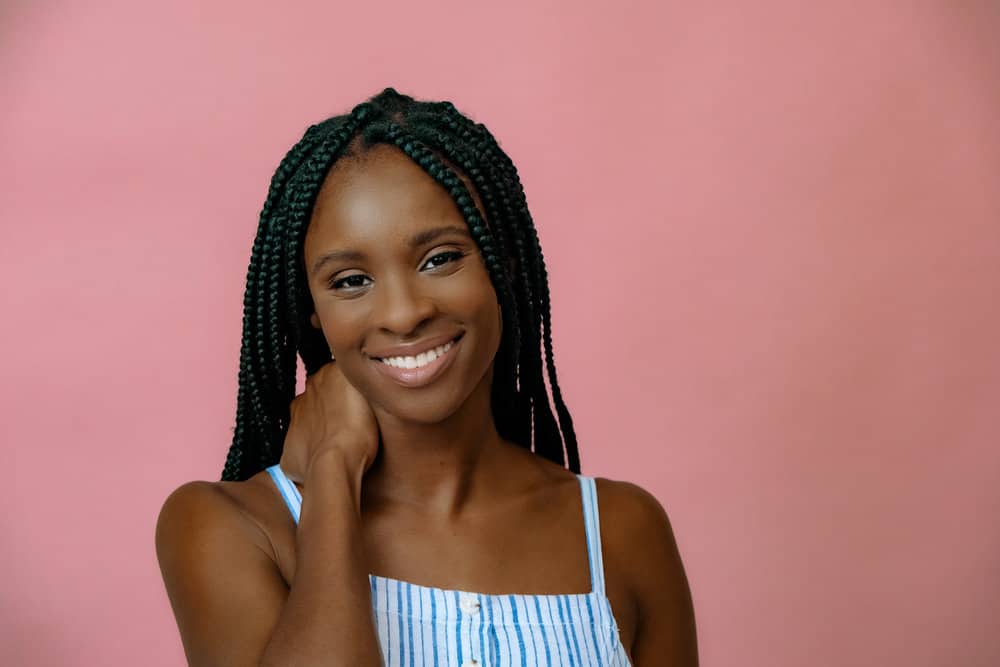
Are you considering straightening your naturally curly hair before getting braids? Many say doing so will result in cleaner-looking braids and an easier braiding process.
It sounds good, but you're right to wonder whether it's a good idea, considering the negative consequences of using heat on the hair.
Still, should I straighten my hair before getting braids? Could the benefits outweigh the risks of straightening your hair before getting braids?
That's what we'll address in this article. We'll explore both sides of the argument and help you make the best decision for your unique hair!
Table of Contents
Should I Straighten My Hair Before Getting Braids?
Straightening your hair before getting braids is not recommended. Most people think that straightening their hair before a braid installation will make the styling process more manageable, lead to long-lasting braids, and keep them from looking frizzy.
But if you ask any natural hair expert who values the health of their hair, they’ll likely tell you that straightening textured hair before getting braids is risky.
We don’t recommend straightening your hair before getting braids because natural hair is more susceptible to heat damage than other hair types.
Any time you put heat on your curls, coils, or kinks, you risk frying your hair and losing your curl pattern forever. And once your hair is damaged, it's difficult to fix (if it's even fixable).
In addition, textured hair is already prone to dryness, so there's no need to put it through unnecessary moisture-zapping heat styling.
Also, curly and kinky hair textures are ideal for braiding because their texture increases your grip and control as you braid. Straightening your hair changes its texture to a silkier form, making it slip while you braid.
Often, the result is crooked, loose braids that won't last very long.
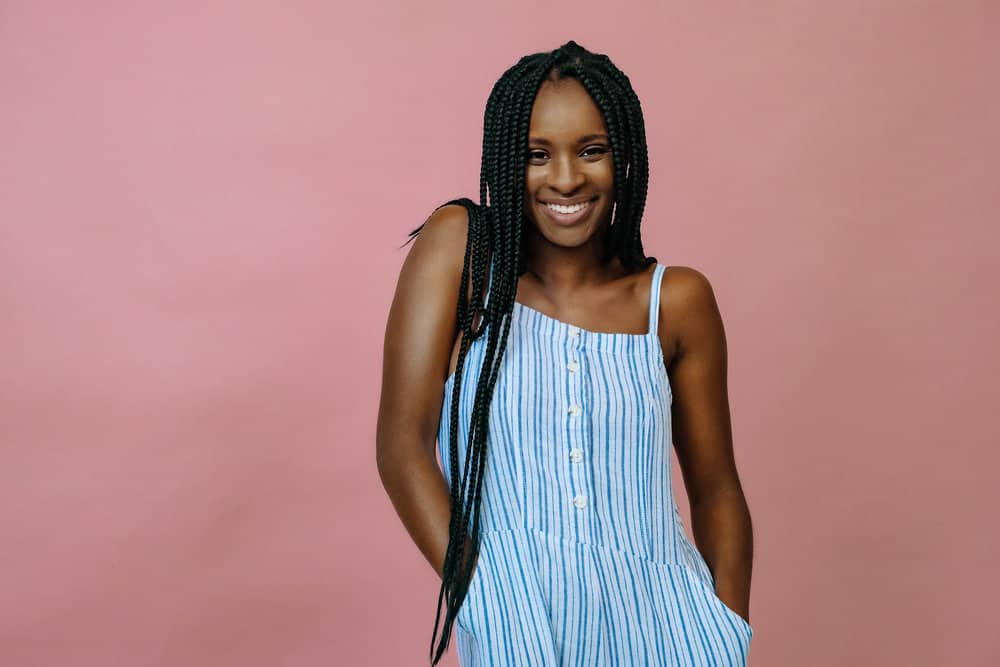
Risks of Straightening Your Hair Before Getting Braids
We've established that straightening your natural hair before getting braids is not the best idea. But what are the risks of doing so?
Heat Damage
As briefly discussed in the previous section, heat damage is the most significant risk of hair straightening. Your hair cuticles are natural barriers that protect your strands from damage.
When you put your hair between two piping hot flat iron plates, the heat opens up these cuticles and makes your strands vulnerable to all sorts of damage, from increased split ends and breakage to the complete loss of your curl pattern.
The more frequently you straighten your hair, the more damaged it will become over time. We're sure you don't want to sacrifice the health of your hair for a temporary style.
Hair Loss
Another risk of straightening natural hair before getting braids is that it can cause hair loss. This is because the heat from the flat iron weakens the hair shaft and makes it more susceptible to breakage.
When you install braids over heat-damaged hair, the added weight of the braids can cause even more breakage and lead to thinning hair or bald patches.
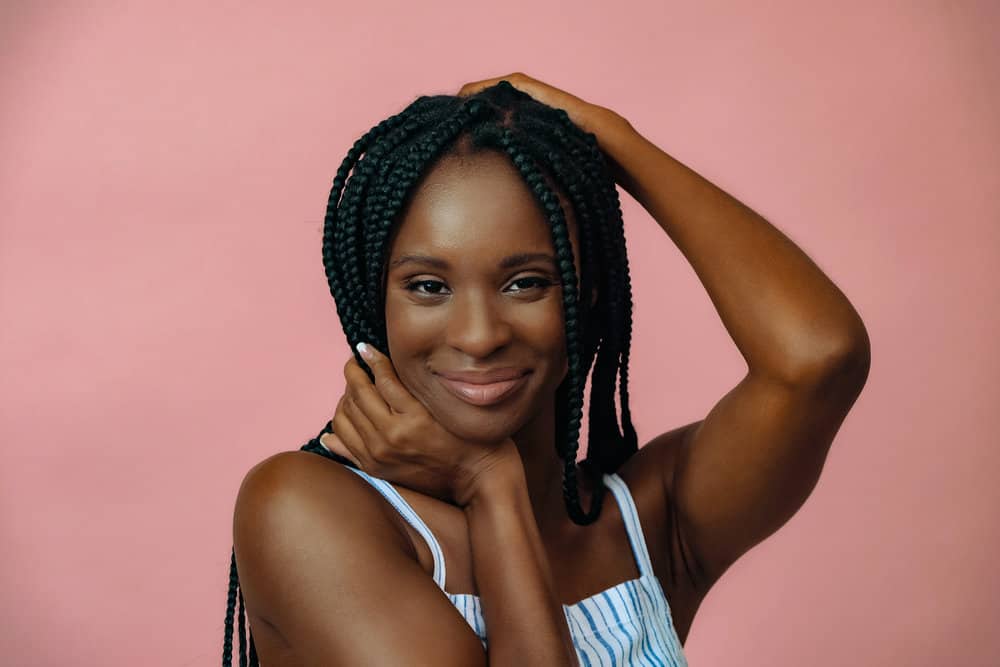
Hair Dryness
Yet another common side effect of straightening natural hair is dryness. The heat from the styling tools strips away the natural oils that keep your hair moisturized.
Since natural hair is typically moisture deficient as is, many ladies are trying to balance moisture and protein treatments to keep their hair and scalp healthy.
Flat ironing can counteract these goals as your hair can become brittle, dry, and frizzy by incorporating unnecessary heat treatments.
Hair Straightening Tips to Minimize Damage
We don’t recommend straightening your natural hair before getting braids. However, we understand that some people may still choose to straighten their hair despite the risks.
If you're set on straightening your natural hair before getting braids, we recommend taking some precautions to minimize the risks.
- Make sure you're using the right tools. Look for a flat iron with ceramic plates, as they cause less damage to natural hair than other flat iron types.
- Always use a heat protectant. Doing so will help block out the heat from your flat iron, minimizing the amount of damage your strands incur.
- Don't straighten your hair more than you have to. The fewer passes you do with the flat iron, the better - this applies even if you use a heat protectant.
- Deep condition your hair regularly. Doing so will help to keep it moisturized and enhance its resilience. Choose a deep conditioner with moisturizing oils, emollients, and other natural ingredients that promote hair health.
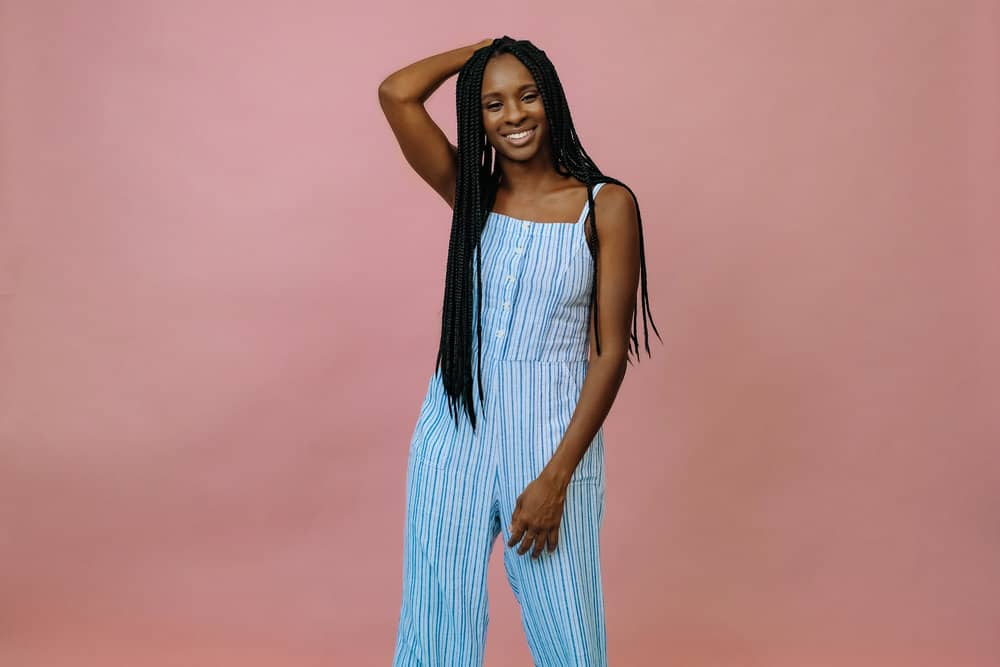
Stretching Your Natural Hair Is Better Than Straightening It
If you're looking for a no-fuss braiding process without the risk of heat damage, we recommend stretching your hair instead of straightening it. Stretching your natural hair elongates your strands without the use of direct heat.
There are several ways to do this, and we'll cover the most common below:
Blow Drying
One of the most common ways curly girls stretch their hair is by blow drying it on a low heat setting. To do this, divide your wet hair into 4-6 sections, then use a quality blow dryer to blow out each section until your curls are fully stretched.
Hold your hair taut or run a shower brush through each section as you blow-dry to maximize the stretch. And if necessary, run a comb through each section after blow drying to remove any tangles and knots.
Banding
Banding is another popular hair stretching technique. It involves stretching your hair with elastic bands; you can do it on wet or dry hair.
To do it, you'll follow the below instructions:
- Divide your hair into 4 or more sections based on how thick your hair is. Four to six sections work for most people, but you may find that you need to do more.
- Put an elastic band on each section at the roots. Be sure not to wrap too tightly – you could end up with hair damage and traction alopecia in the worse cases.
- Grab each section and pull it taut to stretch it out, then wrap several hair ties down the entire length of the hair section.
- Leave your hair in the banded state for a whole day or until each section is completely dry (if you did it on wet hair).
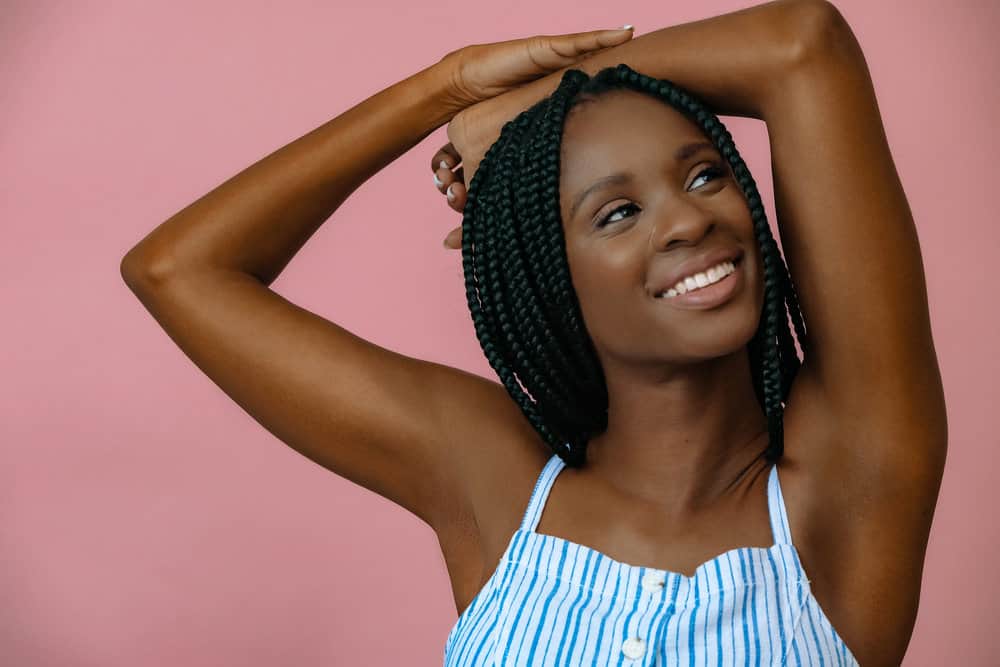
Braiding
You can also stretch your hair by putting it in three strand plaits. This method is straightforward; all you have to do is separate your hair into large sections and braid each section from the roots to the ends.
Use tension as you braid; that’s what will stretch the hair out. When you’re ready for your braid installation, you can quickly unravel the braids and get to styling.
African Threading
Ancient and super effective, African threading is a fantastic way to stretch out the hair without using heat. To use this method, you’ll need stretchy string, hair weaving thread, or yarn.
Here's how to thread your hair using this method:
- Divide your hair into 10-12 sections.
- Grab two long pieces of the thread or string and tightly wrap them around the entire length of each section. Pull the hair taut as you wrap to stretch each section out fully.
- After a few hours minimum, or even overnight, remove the string/thread carefully to avoid breakage.
- How to Keep Braids From Frizzing
- How to Soothe Sore Scalp From Tight Braids
- Do Braids Make Your Hair Grow?
- How to Sleep With Tight Braids
As you can see, there are several ways to stretch natural hair without using heat and compromising the integrity of your hair. We recommend trying one of these methods to see which works best for you.
Natural hair can be more challenging to deal with than straightened hair, but you can ease the difficulty by stretching your natural hair instead of straightening it.
With a bit of time and patience, you can achieve even the sleekest braided looks without damaging your curls. We hope you found this article helpful and that you'll give stretching a try next time you'll be getting your hair braided!




